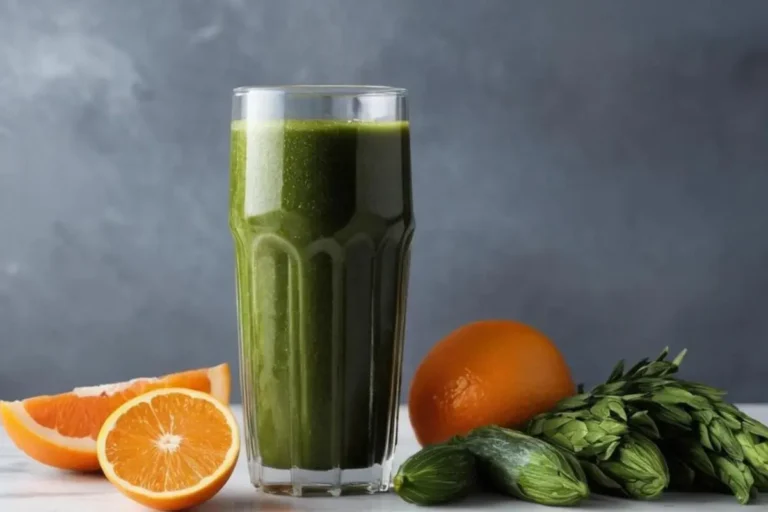To create a comprehensive answer to the question “What are the best things to use for juicing?” it’s important to consider the ingredients that provide optimal nutrition, taste, and versatility. Below is a guide that outlines some of the best fruits, vegetables, herbs, and supplements to use in juicing, as well as tips for maximizing the health benefits.
1. Best Fruits for Juicing
Fruits are a popular choice for juicing due to their sweetness, high water content, and rich nutritional profile.
- Apples: Great for adding natural sweetness and balancing more bitter vegetables. Apples are rich in fiber (especially with the skin on), vitamin C, and antioxidants.
- Oranges: Packed with vitamin C, oranges provide a zesty, refreshing flavor that enhances immune health.
- Pineapple: Known for its tropical flavor and digestive enzymes, pineapple adds both sweetness and health benefits.
- Watermelon: Hydrating and light, watermelon contains lycopene, an antioxidant, and is ideal for refreshing summer juices.
- Berries: Strawberries, blueberries, and raspberries are high in antioxidants and low in sugar, making them excellent for boosting nutritional value.
2. Best Vegetables for Juicing
Vegetables provide essential vitamins, minerals, and antioxidants and often have lower sugar content than fruits, making them ideal for nutrient-dense juices.
- Kale and Spinach: These leafy greens are powerhouses of vitamins A, C, and K, as well as folate and iron. They are excellent for detoxing and boosting overall health.
- Carrots: Naturally sweet, carrots are rich in beta-carotene, which supports eye health, and adds a pleasant flavor.
- Beets: High in nitrates, beets are great for heart health and improving blood flow. They have a distinct flavor but work well with citrus fruits.
- Celery: Known for its hydrating and detoxifying properties, celery is low in calories and packed with vitamins K and C.
- Cucumbers: Hydrating and mild in flavor, cucumbers provide a lot of juice, making them a great base for vegetable blends.
3. Herbs and Spices to Add
Adding herbs and spices to your juice enhances both the flavor and the health benefits.
- Ginger: A powerful anti-inflammatory, ginger is known for aiding digestion, reducing nausea, and adding a spicy kick.
- Mint: Refreshing and cooling, mint helps with digestion and adds a fresh flavor to both fruit and vegetable juices.
- Turmeric: With strong anti-inflammatory and antioxidant properties, turmeric is great for boosting immunity and reducing inflammation.
- Parsley: A detoxifying herb that is rich in vitamin K and chlorophyll, parsley enhances green juices with its light, fresh taste.
4. Supplements and Boosters
To increase the nutritional power of your juice, consider adding natural supplements.
- Spirulina and Chlorella: These algae are packed with protein, iron, and chlorophyll, making them great for detoxification and immune support.
- Flaxseeds or Chia Seeds: Rich in omega-3 fatty acids, these seeds add fiber and healthy fats to your juice.
- Protein Powders: For those seeking extra protein, adding plant-based or whey protein powder can make juice more filling and suitable for post-workout recovery.
5. Equipment Considerations
Using the right juicer is just as important as the ingredients. Here are the main types of juicers:
- Centrifugal Juicers: Fast and affordable, these are good for juicing hard fruits and vegetables, but they may generate more heat, which can degrade some nutrients.
- Masticating Juicers (Cold Press Juicers): These operate slower but retain more nutrients by generating less heat. They work well for leafy greens and harder produce.
- Twin-Gear Juicers: Top-of-the-line juicers that are efficient in extracting juice from tough vegetables, fruits, and leafy greens.
6. Tips for Juicing
- Balance sweetness: Avoid juicing too many high-sugar fruits. A good rule of thumb is to include one sweet fruit and balance it with vegetables.
- Prep ingredients: Wash fruits and vegetables thoroughly and remove any inedible parts (like cores or seeds).
- Drink fresh: Juice is best consumed immediately after juicing to preserve nutrients, but it can be stored in an airtight container in the refrigerator for up to 24-48 hours.
7. Common Juicing Mistakes to Avoid
- Too much fruit: Using too many fruits can lead to high sugar content in your juice, which may negate some of the health benefits.
- Lack of variety: Focusing only on one or two ingredients can reduce the nutritional diversity of your juice. Mix different fruits and vegetables for a balanced intake of vitamins and minerals.
- Skipping the greens: Green vegetables are critical for getting essential vitamins, minerals, and chlorophyll. Don’t skimp on leafy greens.
Conclusion
To get the most out of juicing, it’s best to use a combination of fresh fruits and vegetables, complemented with herbs and superfoods. This approach ensures that your juices are packed with essential nutrients, taste great, and support overall health. Start with some of the best juicing ingredients like apples, kale, ginger, and spirulina to make refreshing, nutrient-dense drinks that boost your well-being.
